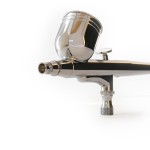
Earlier this month (Dental Elf – 5th-Feb 2015) we looked at a review of patients’ perceptions of air polishing devices for periodontal treatment.
The aim of this review was to assess the effects of air polishing devices on oral tissues.
Methods
Searches were conducted in Medline, Embase and the Cochrane Library for controlled studies assessing the effect of air polishing devices on dentine, cementum or marginal gingivae. Only studies in English or German were considered. Two reviewers independently screens studies with risk of bias being assessed using the Cochrane Collaboration tool and the Strengthening the Reporting of Observational studies in Epidemiology (STROBE) statement. Because of the heterogeneity of the study designs and spraying protocols meta-analysis was not conducted
Results
- 17 studies were included.
- 2 in vivo studies; 3 ex vivo studies and 12 in vitro studies were included.
- A range of air polishing powders were used; sodium bicarbonate, calcium carbonate, pumice or glycine.
- 13 studies reported the effects of air polishing devices on cementum and dentine.
- Hard tissue modifications, including defect depths and volume, caused by sodium bicarbonate or calcium carbonate powders were significantly greater compared to powders consisting of glycine.
- 4 studies assessed soft tissue effects with data indicating less potential of harm to the gingivae with glycine powder compared to sodium bicarbonate powder or instrumentation with curettes.
Conclusions
The authors concluded:
Glycine powder air polishing may be safely applied to human root surfaces and gingivae.
Commentary
The authors have noted a number of limitations in this review. It is restricted to studies published in English or German so additional relevant studies may have been missed. The majority of the included studies have been conducted in vitro which may not adequately represent clinical use, as clinically relevant protocols may not have been followed. A wide range of air polishing devices and powders were tested and in some studies details on grain sizes of powders were not provided. Product manufacturers supported a majority of the studies.
Overall the authors considered that there was moderate evidence that glycine powder air polishing had less potential for harm of oral hard and soft tissues than sodium bicarbonate powders.
Links
Bühler J, Amato M, Weiger R, Walter C. A systematic review on the effects of air polishing devices on oral tissues. Int J Dent Hyg. 2015 Feb 17. doi: 10.1111/idh.12120. [Epub ahead of print] PubMed PMID: 25690301.
Dental Elf 5th Feb 2015 – Periodontal treatment using air polishing had good patient perception

Zonder opleiding/bekwaamheid niet hanteren! “@TheDentalElf: Air polishing- glycine powder less harmful suggests rev. http://t.co/ESvylhPEN5“
@TheDentalElf Glycine powder also can be used for implantitis treatment because it can be dissolved by water.
Don’t miss: Air polishing – glycine powder less harmful suggests review http://t.co/gpztdQGyuM
Air polishing- glycine powder has less potential for harm suggests review http://t.co/asQiqXWTL1